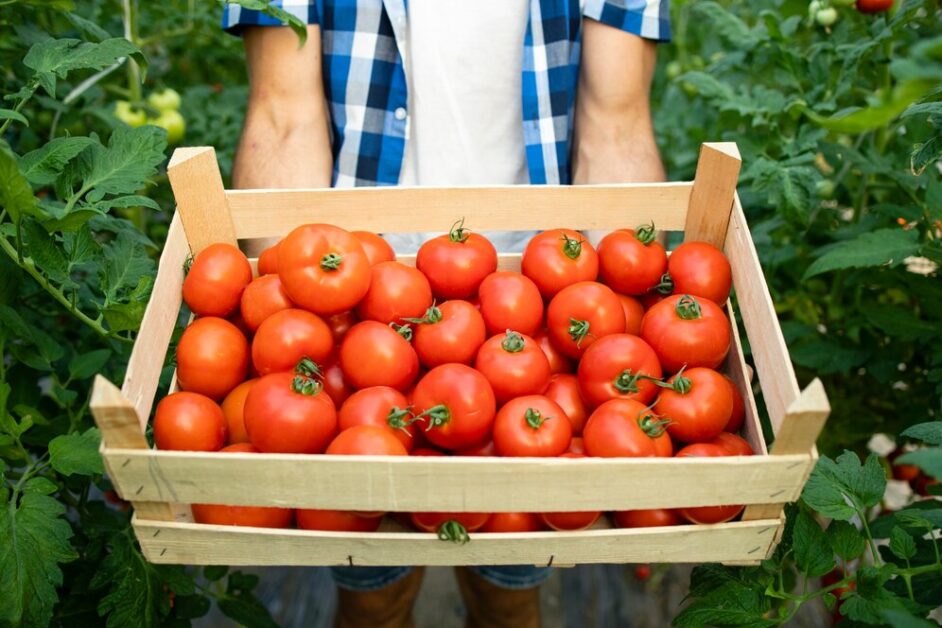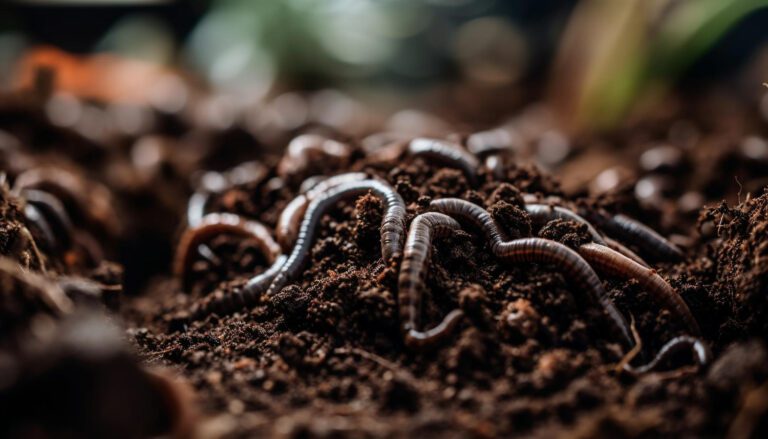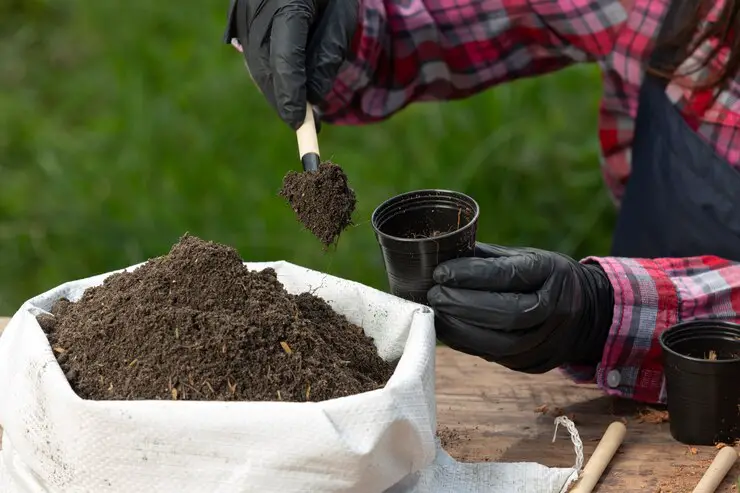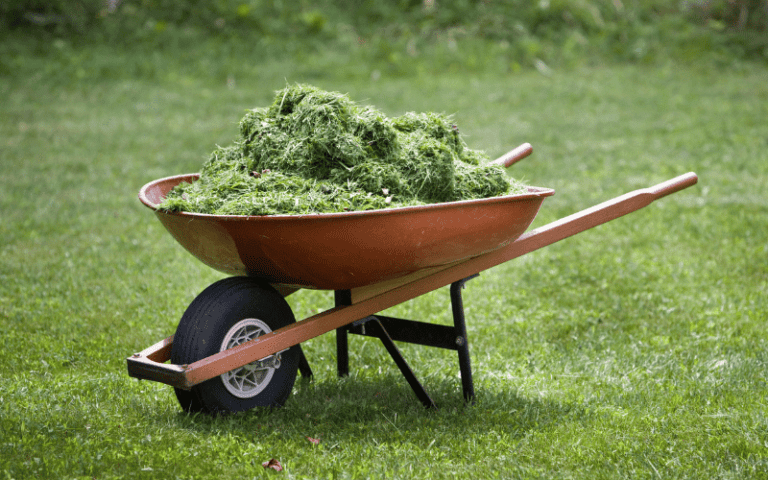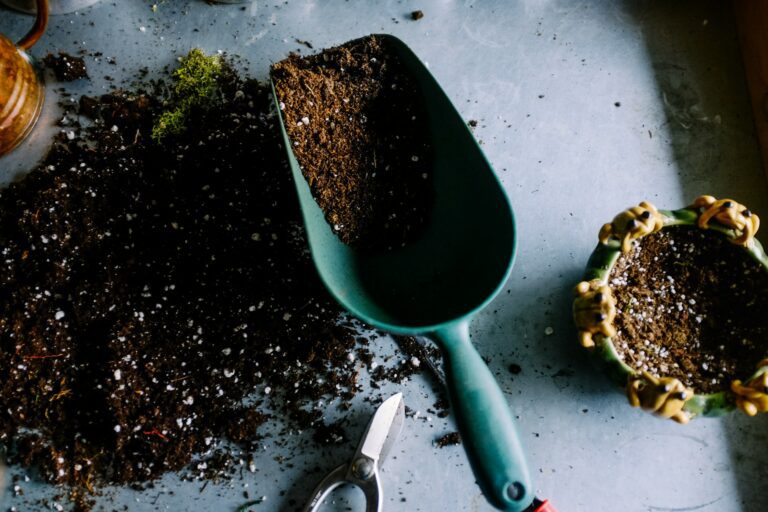Tomato Fertilizer: How to Use It Right and Boost Your Harvest
Table of Contents
Importance of Soil Nutrients for Tomato Plants
The importance of soil nutrients for tomato plants cannot be overstated. As a gardener, it is crucial to understand the role that nutrients play in the growth and development of these plants. Tomatoes require a wide range of essential nutrients to thrive, including macronutrients such as nitrogen, phosphorus, and potassium, as well as micronutrients like iron, zinc, and manganese. Macronutrients like nitrogen are responsible for promoting healthy leaf growth and vibrant green foliage. Phosphorus is essential for proper root development, flower production, and fruit formation. Potassium, on the other hand, aids in disease resistance, improves fruit quality and enhances overall plant vigor.
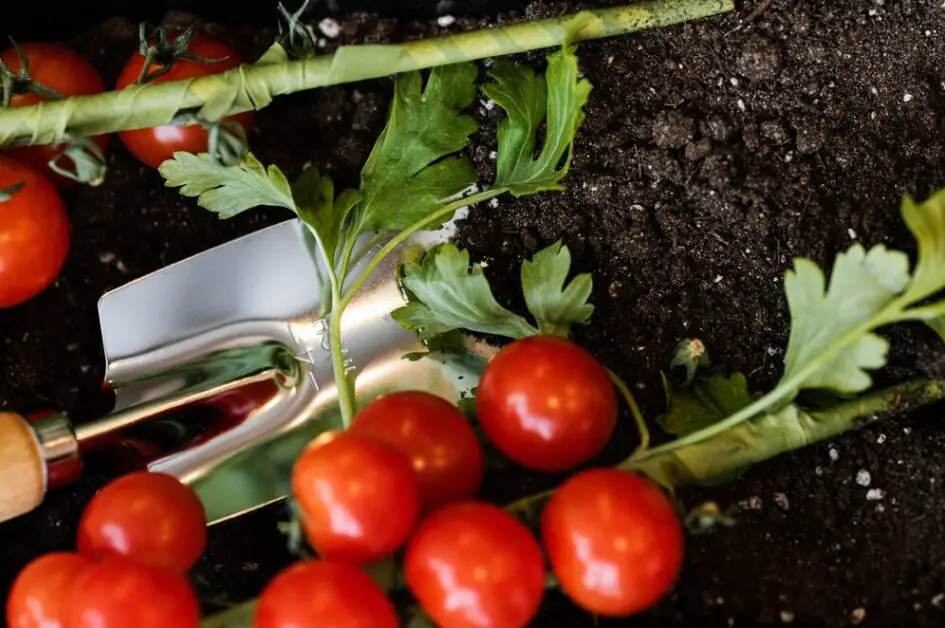
In addition to macronutrients, tomatoes also require micronutrients in smaller quantities. These micronutrients are essential for various physiological processes in the plant, including enzyme activation and nutrient uptake. Deficiencies in micronutrients can lead to stunted growth, yellowing leaves, reduced fruit set, and overall poor plant health.
Providing the right balance of nutrients is crucial for maximizing the yield and quality of your tomato plants. By ensuring that the soil is rich in essential nutrients, you can provide the necessary foundation for healthy growth, strong root development, and bountiful harvests. Stay tuned as we delve into the specific nutritional needs of tomato plants and how you can fulfill them to cultivate thriving plants in your garden.
Understanding the Nutritional Needs of Tomato Plants
Tomato plants, like any other plants, have specific nutritional needs that must be met in order to ensure their healthy growth and maximum yield. Understanding these needs is crucial for gardeners who want to cultivate thriving tomato plants.
Essential Nutrients for Plant Growth: Functions and Sources.
| Nutrient | Function | Sources |
| Nitrogen | Boosts growth | Compost, manure, urea |
| Phosphorus | Supports roots | Bone meal, superphosphate |
| Potassium | Growth promoter | Wood ash, compost, K sulfate |
| Calcium | Strengthens cells | Lime, gypsum, eggshells |
Tomato plants require a balanced combination of macronutrients and micronutrients for optimal development. Macronutrients, such as nitrogen, phosphorus, and potassium, are needed in larger quantities and play essential roles in various plant functions. Nitrogen is crucial for vigorous vegetative growth, while phosphorus promotes strong root development and flower formation. Potassium helps regulate water uptake, nutrient transport, and overall plant health.
Apart from macronutrients, tomato plants also require a range of micronutrients, albeit in smaller amounts. These micronutrients, including iron, manganese, zinc, copper, and boron, are essential for vital processes like enzyme activation, photosynthesis, and overall plant metabolism. They are often present in the soil, but their availability can be affected by factors such as soil pH, organic matter content, and microbial activity.
Meeting the nutritional needs of tomato plants begins with conducting soil tests to determine the existing nutrient levels and pH. This information serves as a foundation for making informed decisions about fertilizer application. By understanding the specific nutrient requirements of tomato plants and their current soil conditions, gardeners can tailor their fertilizer regimen accordingly, ensuring that the plants receive adequate nutrition throughout their growth cycle.
Choosing the Right Tomato Fertilizer for Your Garden
Choosing the right tomato fertilizer for your garden is crucial for the healthy growth and abundant yield of your tomato plants. With the wide variety of options available in the market, it can be overwhelming to make the right choice. However, understanding the nutritional needs of tomato plants and considering the specific requirements of your garden can help simplify the decision-making process.
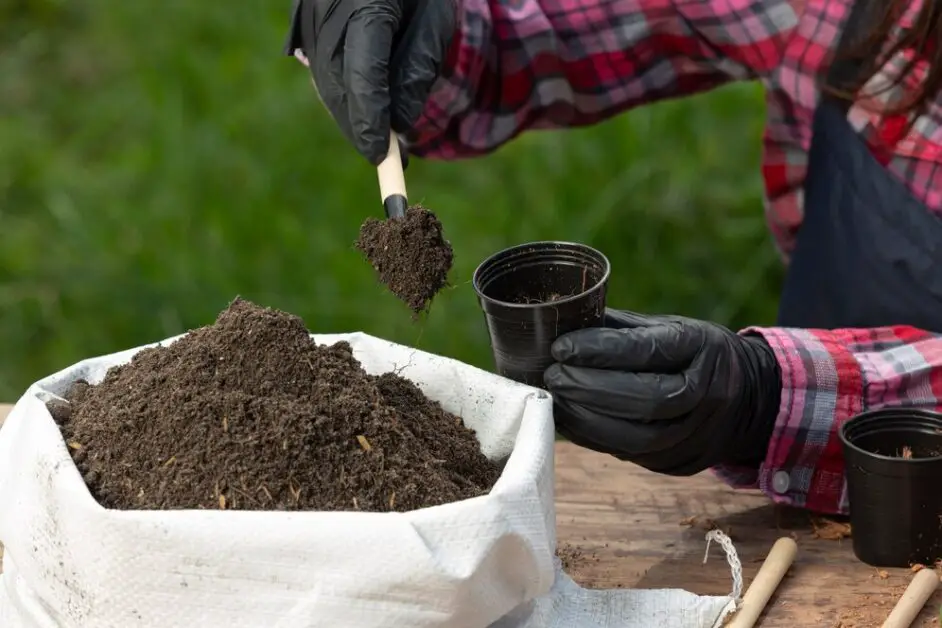
When selecting a tomato fertilizer, it is essential to consider the nutrient composition. Tomatoes require three primary nutrients – nitrogen (N), phosphorus (P), and potassium (K) – in varying quantities throughout their growth stages. Nitrogen promotes leaf and stem growth, phosphorus enhances root development and flowering, and potassium strengthens the plant’s overall health and disease resistance. Therefore, it is crucial to choose a fertilizer that provides a balanced ratio of N-P-K for optimal tomato growth.
In addition to the nutrient composition, there are other factors to consider when choosing a tomato fertilizer. These include the fertilizer’s release mechanism (slow-release or quick-release), the presence of secondary and micronutrients, and whether you prefer organic or synthetic options. By carefully evaluating these factors and understanding the specific needs of your tomato plants, you can select the right fertilizer to promote vigorous growth, abundant flowering, and ultimately, a bountiful harvest.
• Nutrient composition: Consider the balanced ratio of nitrogen, phosphorus, and potassium (N-P-K) for optimal tomato growth.
• Nitrogen promotes leaf and stem growth.
• Phosphorus enhances root development and flowering.
• Potassium strengthens overall plant health and disease resistance.
• Release mechanism: Choose between slow-release or quick-release fertilizers based on your preference and the specific needs of your tomato plants.
• Secondary and micronutrients: Look for fertilizers that contain secondary nutrients like calcium, magnesium, and sulfur, as well as micronutrients like iron, manganese, zinc, copper, boron, and molybdenum. These additional nutrients can further support the healthy growth of your tomato plants.
• Organic vs. synthetic options: Decide whether you prefer organic or synthetic fertilizers. Organic options are derived from natural sources such as composted manure or fish emulsion and provide slow-release nutrients over time. Synthetic fertilizers are chemically formulated with precise nutrient ratios but may have a quicker release mechanism.
By carefully considering these factors and understanding the specific requirements of your garden, you can choose a tomato fertilizer that meets all the necessary criteria for healthy plant growth. Remember to follow the recommended application rates provided by the manufacturer to avoid over-fertilization which can harm your plants. With proper nutrition management through an appropriate fertilizer choice, you will be rewarded with robust tomato plants that produce an abundant harvest throughout the growing season.
Different Types of Tomato Fertilizers Available in the Market
When it comes to choosing the right tomato fertilizer for your garden, there are several options available in the market. Each type of fertilizer has its own unique composition and benefits. One common type is a balanced fertilizer, which contains a mix of nitrogen, phosphorus, and potassium (NPK) in equal proportions. This type of fertilizer is suitable for providing overall nutrition to tomato plants and promoting healthy growth.
Types of Tomato Fertilizers
| Type | Description |
| Organic | Compost, Manure, Fish Emulsion, Seaweed Extract, Bone Meal |
| Inorganic | Nitrogen-based, Phosphorus-based, Potassium-based, Complete |
| Slow-release | Coated Granules, Controlled-release Pellets |
| Liquid | Soluble Powders, Concentrated Liquids |
Another option is a slow-release fertilizer, which releases nutrients gradually over a longer period of time. This type of fertilizer is beneficial for the continuous feeding of tomato plants and helps in avoiding nutrient deficiencies. Additionally, there are also specialized fertilizers designed specifically for tomatoes, which contain additional micronutrients necessary for optimal growth and fruit production.
As a gardener, it is important to understand the specific nutritional needs of your tomato plants and choose a fertilizer that aligns with those requirements. Consider factors such as the stage of growth, soil composition, and any existing nutrient deficiencies to make an informed decision. By selecting the right type of tomato fertilizer, you can provide your plants with the essential nutrients they need to thrive and yield a bountiful harvest.
(Note: The paragraphs provided above do not contain conjunctive adverbs conjoining sentences.)
Organic vs. Synthetic Tomato Fertilizers: Pros and Cons
Organic and synthetic tomato fertilizers are two different options available to gardeners for nourishing their tomato plants. Let’s explore the pros and cons of each:
Organic tomato fertilizers are made from natural sources such as animal manure, compost, or plant extracts. One of the major advantages of organic fertilizers is their ability to improve soil health and promote long-term sustainability. These fertilizers release nutrients slowly, providing a steady supply of nourishment to the plants. Additionally, organic fertilizers enhance soil structure, water retention, and microbial activity, thus fostering a healthy and balanced ecosystem for your tomato plants.

On the other hand, synthetic tomato fertilizers are formulated using chemicals and manufactured nutrients. These fertilizers are known for their quick-release properties, providing an immediate boost to plant growth and productivity. Synthetic fertilizers are highly concentrated, allowing gardeners to adjust nutrient levels precisely. Furthermore, they are often fortified with micronutrients, ensuring that tomato plants receive a comprehensive range of essential elements.
However, synthetic fertilizers come with their own set of drawbacks. Overuse or improper application can lead to nutrient imbalances, soil degradation, and excessive salt accumulation. Additionally, their quick-release nature may result in leaching of nutrients into groundwater, causing environmental concerns. Despite these drawbacks, synthetic fertilizers can be a convenient option for gardeners seeking rapid results or growing tomatoes in specific conditions where precise nutrient control is crucial.
When and How Often to Apply Tomato Fertilizer
To ensure healthy growth and maximum yield, it is crucial to know when and how often to apply tomato fertilizer. Timing is key when it comes to fertilizing tomato plants, as applying it at the right stage of growth can greatly enhance their development. It is generally recommended to start fertilizing tomato plants after they have reached a height of 6-8 inches and have set their first true leaves. This typically occurs approximately 2-3 weeks after transplanting seedlings into the garden.
When it comes to the frequency of application, tomato plants benefit from regular and consistent feeding throughout their growing season. As a general guideline, it is advisable to feed tomato plants every 2-3 weeks until they start to set fruit. Once the fruit begins to develop, weekly fertilization is recommended to provide a continuous supply of nutrients to support fruit production and overall plant health.
However, it is important to monitor the plants closely and adjust the frequency based on their specific needs, as every garden and variety of tomatoes may have slightly different requirements. Keeping track of growth and observing any signs of nutrient deficiency or excess can help determine the ideal frequency of fertilization for your tomato plants.
Proper Application Techniques for Tomato Fertilizer
Proper application techniques for tomato fertilizer are crucial to maximize the growth and productivity of your plants. When it comes to fertilizing tomatoes, it’s important to strike a balance between providing enough nutrients for healthy growth and avoiding over-fertilization, which can lead to negative consequences.
To begin with, it is essential to apply the fertilizer at the right time. For transplanted tomatoes, it is recommended to wait until they have established a good root system before applying any fertilizer. This usually occurs about two to three weeks after transplantation. Applying fertilizer too early can stress the young plants and impede their growth. On the other hand, if you’re growing tomatoes from seeds, you can wait until the plants have formed their first true leaves before applying fertilizer.
When applying fertilizer, it’s crucial to distribute it evenly around the base of the plants. Avoid placing the fertilizer directly on the stems or leaves, as this may cause burning or damage. Instead, create a circle around the plants, ensuring that the fertilizer is approximately six to eight inches away from the stems. This will allow the roots to access the nutrients without being overwhelmed.
Additionally, it’s beneficial to water the plants before and after applying fertilizer. This helps to prevent any potential root burn and ensures that the nutrients are properly absorbed by the roots. Watering also helps to activate the fertilizer, allowing it to release its nutrients and reach the roots effectively.
Remember, each tomato variety and soil type may have unique nutrient requirements. Therefore, it is advisable to test your soil before determining the specific types and quantities of fertilizers needed. Soil testing can provide valuable insights into nutrient deficiencies or excesses, allowing you to tailor your fertilizer application accordingly.
By following proper application techniques, you can provide your tomato plants with the nutrients they need while avoiding potential damage. Next, let’s delve into the essential factors to consider when determining the quantity of fertilizer to apply to your tomatoes.
Factors to Consider When Determining Fertilizer Quantity
Determining the right quantity of fertilizer for your tomato plants is crucial for their health and productivity. Several factors need to be considered to determine the precise amount of fertilizer required. Firstly, the size of your tomato plants plays a significant role. Larger plants will require more nutrients than smaller ones.

Secondly, the growth stage of the plants should be taken into account. Younger plants have different nutrient requirements compared to mature ones. Additionally, the soil condition is a crucial factor. Conducting a soil test to determine the nutrient levels can help you understand which specific nutrients are lacking and need to be supplemented. Lastly, the desired yield and quality of your tomatoes will also influence the fertilizer quantity. For a higher yield or better quality, a relatively higher amount of fertilizer may be necessary.
It is important to note that while understanding the factors mentioned above is essential, it is also necessary to avoid over-fertilization. Applying excessive fertilizer can lead to nutrient imbalances and even detrimental effects. Over-fertilization can cause nutrient burn, stunted growth, or even death of the plant. Therefore, it is recommended to carefully follow the instructions on the fertilizer packaging and consult with a gardening expert or agronomist if needed. Taking into account these factors and ensuring a balanced and appropriate amount of fertilizer will contribute to the healthy growth and abundant yield of your tomato plants.
Signs of Over-Fertilization and How to Avoid it
Over-fertilization can have detrimental effects on tomato plants, hinder their growth, and even lead to plant death. One of the signs of over-fertilization is excessive foliage growth with minimal fruit production. When tomato plants receive an overabundance of nutrients, they divert their energy to foliage development, resulting in lush green leaves but fewer flowers and fruits. Another visible sign is the presence of burnt or yellowing leaf tips, which is indicative of nutrient burn. The high concentration of fertilizers can cause the roots to become overwhelmed, leading to nutrient imbalances and damage.
To avoid over-fertilization, it is crucial to follow proper fertilization guidelines. Start by conducting a soil test to assess its nutrient composition and pH levels. This will help determine the specific needs of your tomato plants. Based on the test results, select a fertilizer that matches the requirements of your soil and crops. Remember to apply the fertilizer at the appropriate time – usually at planting and during the growing season – and in the recommended quantities. Proper timing and dosage ensure that the plants receive the nutrients they need without overpowering them. Additionally, regular monitoring of the plants’ response to fertilization can identify early signs of over-fertilization, allowing for adjustments to be made promptly.
Common Mistakes to Avoid When Using Tomato Fertilizer
One of the common mistakes to avoid when using tomato fertilizer is over-fertilizing. Many gardeners make the assumption that applying more fertilizer will result in healthier and bigger tomato plants. However, excessive amounts of fertilizer can actually be harmful to the plants. Over-fertilization can lead to nutrient imbalances, burning of roots, and excessive vegetative growth at the expense of fruit production. It is important to follow the recommended application rates and schedules provided by the fertilizer manufacturer, and to always err on the side of caution by applying a little less rather than too much.
Another mistake to avoid is applying fertilizer too close to the base of the tomato plants. Fertilizer should be applied evenly around the drip line of the plants, which is the outer edge of the canopy where water drips off during rainfall. Applying fertilizer too close to the stem can result in root burn and the plant’s inability to absorb nutrients effectively. By spreading the fertilizer evenly around the drip line, the nutrients can be readily available to the plant’s root system, promoting healthy growth and optimal fruit production.
By being aware of these common mistakes and taking the necessary precautions, gardeners can ensure that their tomato plants receive the right amount of nutrients without causing harm.
The Role of Watering in Maximizing Fertilizer Effectiveness
Watering plays a crucial role in maximizing the effectiveness of tomato fertilizer. The proper amount and frequency of watering can greatly enhance nutrient uptake by the plants, ensuring that the fertilizer is utilized to its full potential. Water is the carrier medium for nutrients, enabling them to be dissolved and absorbed by the roots.
To optimize fertilizer effectiveness, it is important to water tomato plants deeply and evenly. This encourages the development of a robust root system that can access nutrients from a larger soil volume. Shallow watering, on the other hand, can lead to poor nutrient distribution and restricted root growth.
Additionally, timing is key when it comes to watering tomato plants. Watering in the morning allows the foliage and soil surface to dry during the day, reducing the risk of disease and fungal issues. Conversely, watering in the evening can create a damp environment that promotes the growth of pathogens. Consistency in watering is also vital, as fluctuations in soil moisture can disrupt nutrient uptake and lead to stress in the plants.
By following a proper watering schedule and technique, gardeners can maximize the effectiveness of tomato fertilizer, ensuring that the plants receive a steady supply of nutrients for optimal growth and yield. However, it is important to note that overwatering can be detrimental to the plants, so finding the right balance is crucial.
Supplementary Techniques to Boost Tomato Plant Health and Yield
One supplementary technique to boost tomato plant health and yield is the use of companion planting. Companion planting involves growing specific plants together to enhance their growth, deter pests, and improve overall plant health. For tomatoes, some beneficial companion plants include basil, marigolds, and chives. These plants can help repel pests such as aphids, whiteflies, and nematodes, which can damage tomato plants. Additionally, they can attract beneficial insects like ladybugs and lacewings that feed on harmful pests. By strategically planting these companion plants alongside your tomatoes, you can create a more balanced and biodiverse ecosystem in your garden, leading to healthier and more productive tomato plants.
Another effective technique is the use of foliar feeding. Foliar feeding involves applying liquid fertilizers directly to the leaves of tomato plants. This method allows for quick absorption of nutrients by the plant, bypassing the soil and root system. Foliar feeding can be particularly beneficial during periods of increased nutrient demand, such as heavy fruit production. By providing the necessary nutrients directly to the leaves, you can ensure that your tomato plants receive immediate nourishment.
Additionally, foliar feeding can be a useful tool to correct nutrient deficiencies or imbalances in a timely manner. However, it is important to note that foliar feeding should not replace regular soil fertilization but rather serve as a supplementary method to support the plants’ nutrient needs.
Monitoring Tomato Plant Progress and Adjusting Fertilizer Regimen
As a gardener, it is important to monitor the progress of your tomato plants and make adjustments to your fertilizer regimen accordingly. By closely observing the growth, health, and overall performance of your plants, you can ensure that they are receiving the optimal nutrients they need to thrive.
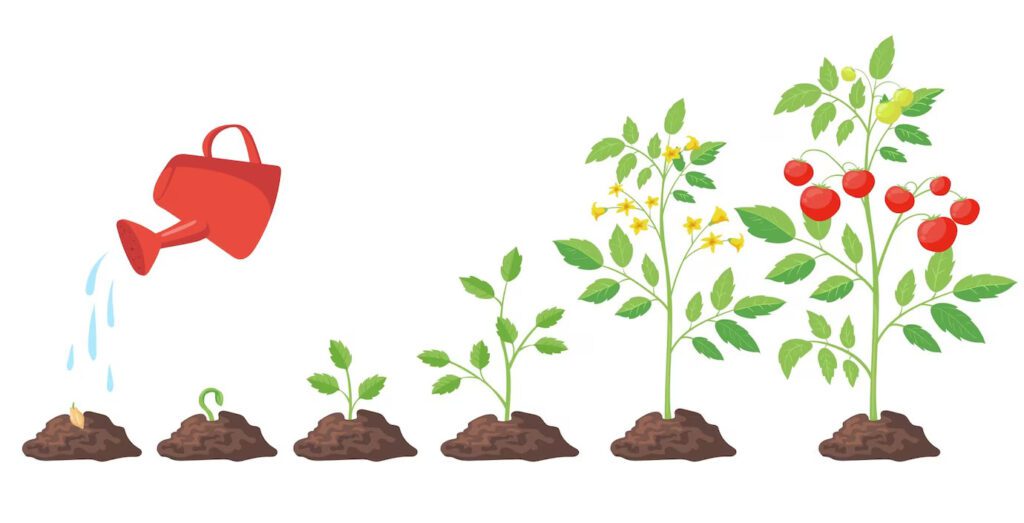
One way to monitor the progress of your tomato plants is to regularly inspect their leaves. Healthy leaves should be vibrant green and free from discoloration, spots, or signs of wilting. If you notice any abnormalities, it could be an indication of nutrient deficiencies or imbalances. By identifying these issues early on, you can adjust your fertilizer regimen to address the specific needs of your plants.
Another indicator to consider is the growth rate of your tomato plants. Tomato plants should exhibit steady and vigorous growth throughout the growing season. If you notice stunted growth or lack of progress, it could be a sign that your plants are not receiving adequate nutrients. Adjusting your fertilizer regimen by increasing the frequency or dosage can help provide the necessary nutrients to support healthy growth.
In addition to visual cues, it is beneficial to conduct regular soil tests to assess the nutrient levels and pH balance. Soil testing can provide valuable insights into the nutrient deficiencies or excesses present in your garden soil. By adjusting your fertilizer regimen based on the results of the soil test, you can ensure that your tomato plants are receiving the precise nutrients they require for optimal growth and development.
Remember, monitoring the progress of your tomato plants and adjusting your fertilizer regimen accordingly is a crucial aspect of successful gardening. By being attentive to the needs of your plants and making informed decisions, you can foster healthy growth and maximize the yield of your tomato harvest.
Tips for Storing and Handling Tomato Fertilizer Properly
Proper storage and handling of tomato fertilizer is crucial to ensure its effectiveness and longevity. When it comes to storing your tomato fertilizer, it is important to keep it in a cool, dry place, away from direct sunlight and moisture. Exposure to heat and humidity can lead to the breakdown of the fertilizer’s nutrients, reducing its effectiveness.
Watch this video to learn more about growing lots of tomatoes.
Additionally, it is essential to keep tomato fertilizer out of reach of children and pets. Fertilizers contain chemicals that can be harmful if ingested or come into contact with the skin. It is advisable to store the fertilizer in a locked cabinet or shed to prevent accidental ingestion or spills.
Handling tomato fertilizer should also be done with caution. While applying the fertilizer, it is recommended to wear protective gloves, goggles, and a mask to prevent any contact with the skin, eyes, or inhalation of potentially harmful particles. Following the instructions provided on the fertilizer packaging is essential to ensure the correct dosage and application method.
By adhering to these tips for storing and handling tomato fertilizer properly, you can maximize its effectiveness and minimize any potential risks associated with its use. Proper storage and safe handling are key elements in maintaining the quality and safety of your tomato plants’ nutrient supply.
Can I use regular fertilizer for my tomato plants?
It is recommended to use a tomato-specific fertilizer that is specially formulated to meet the nutritional needs of tomato plants. Regular fertilizers may not provide the necessary balance of nutrients required for optimal tomato growth.
What are the signs of over-fertilization in tomato plants?
Signs of over-fertilization in tomato plants include leaf burn, stunted growth, yellowing or browning of leaves, and decreased fruit production. It is important to avoid over-fertilizing as it can harm the plants.
How often should I apply tomato fertilizer?
Tomato fertilizer should typically be applied every 2-3 weeks during the growing season. However, it is important to follow the specific instructions provided by the manufacturer of the fertilizer you are using.
Can I mix different types of tomato fertilizers together?
It is not recommended to mix different types of tomato fertilizers together unless specifically instructed by the manufacturer. Different fertilizers may have different nutrient compositions and mixing them can result in imbalanced nutrition for your tomato plants.
How should I store tomato fertilizer properly?
Tomato fertilizer should be stored in a cool, dry place, away from direct sunlight and moisture. It is important to keep it in its original packaging or a tightly sealed container to maintain its potency.
Can I use expired tomato fertilizer?
It is not recommended to use expired tomato fertilizer as its effectiveness may have significantly decreased. Expired fertilizer may not provide the necessary nutrients for your tomato plants and could potentially harm them.
Is organic or synthetic tomato fertilizer better?
Both organic and synthetic tomato fertilizers have their pros and cons. Organic fertilizers are derived from natural sources and are generally considered more environmentally friendly, while synthetic fertilizers provide precise nutrient ratios. The choice depends on personal preference and gardening practices.

